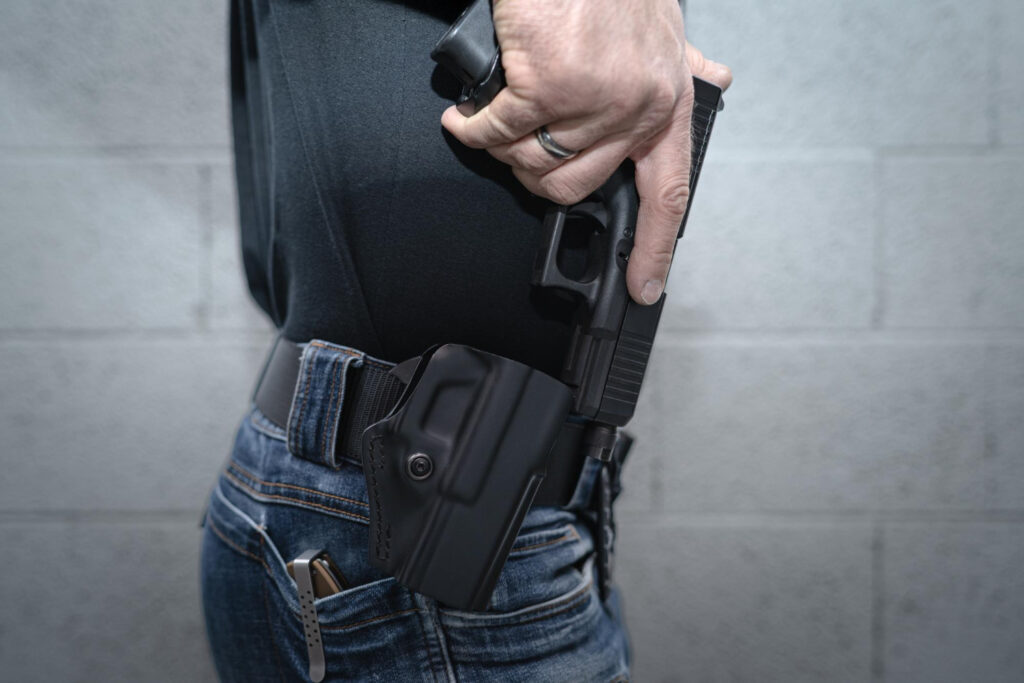
The Illusion of Safety: Employing Armed Security to Reduce Workplace Violence
To some, I’m sure this may very well be a rather controversial topic, but I’ve never shied away from discussing these type issues. Whether it’s on social media, news reports, or in conversations with organizational executives, there appears to be somewhat of a trend in these businesses employing armed security personnel to deter acts of violence on their grounds. In addition, there seems to be no shortage of individuals peddling these services as being the solution to everyone’s fear of workplace violence – although the credentials of these so-called “experts” pushing for armed security services is suspect, at best.
The Rise of Fear
Workplace violence and mass shootings, in particular, generate tremendous frenzy among the media and cause people to believe that these events happen regularly and that organizations must take drastic initiatives to prevent these acts. While events like mass shootings do occur more frequently in the U.S. than any other country, the probability of these type events happening at any one particular business is statistically rare. The media reporting of these events creates panic, the panic turns into irrational fear, and this irrational fear is what drives individuals to push armed security services off on frantic executives as they eagerly cut into company profits.
Why mention mass shootings when the majority of workplace violence involves non-fatal aggression? The reason is that an armed security officer can only use his/her firearm in response to a fatal threat, such as workplace shootings. You cannot use fatal force as a deterrent to a non-fatal threat – which is what most acts of workplace violence are. So, in all truthfulness, having armed security personnel is an overreaction to any perceived threat where unarmed security or individual’s skills in conflict resolution skills would suffice over 95% of the time.
Rational Choice Theory and Workplace Violence
The main benefit of having armed security is in hoping that their presence on the work campus would deter any act of violence. This thought process draws largely from criminology and the understanding of rational choice theory. According to rational choice theory, a crime will be committed if three factors are simultaneously present. These three factors are: a motivated offender, a suitable target, and a lack of guardians or protectors. So armed security is hoped to de-motivate any potential offender while being a present guardian – thus removing two sides of the triangle that rational choice theory posits.
The weakness of this is that these individuals, who either consciously or unconsciously subscribe to rational choice theory, believe that offenders make a rational choice to take part in their acts of violence. This is a tremendously flawed perspective as it is essentially trying to explain that an irrational act was the product of rational thought. If an individual wishes to take part in an act of violence, he or she will do so regardless of whether armed security is on the premise. The reason is that in the moment that they take part in the violence, they’re not in a rational frame of mind because a rational person would not resort to violence. Even though their decision may appear to them to be rational, it’s not because they’re largely not aware that their thinking is irrational. This is much like the person who decides to drive home after an evening of heavy drinking or the depressed person committing suicide. In both instances, the person, drunk or depressed, believed they were making a rational choice but, in their condition, they were incapable of doing so.
The true, realistic benefit of having armed security personnel on campus is that if a violent event was to occur, they could have a faster response time than local law enforcement – although the use of their firearm would be limited to only fatal threats. Again, over 95% of workplace violence events do not require an armed response. So, the question for the organizational executive becomes whether the expense of armed security is justified as there is no shortage of security “experts” who are pushing these tactics.
Perception Is Everything
No one wants to be viewed as being caught sleeping if an act of workplace violence was to happen on company property. Ideally, everyone wants to be portrayed as being prepared for these type events if for no other reason than just in case. So, many executives buy into the notion that they need armed security, especially in hospital and school settings. The presence of armed security makes it look as if the company is prepared to combat violence, should it arise – optics are everything and they know that they’ll be heavily scrutinized in the media if they were to ever experience violence.
Skillset and Experience
Having armed security tremendously increases the liability for the organization when they do have to respond to an act of violence. A weakness of many armed security officers and their employing agencies is that their training is lacking, and they do not have the experience or skillset to properly do their job. Granted, some of these individuals may also be full-time police officers but that does not equate to them being adequately skilled or trained. The job performance and expectations of a street police officer are vastly different from an armed security officer utilized in settings such as hospitals and schools. As such, the actions necessary to respond to an aggressor in the workplace are different from the tactics used on the street in response to a criminal offender.
Years ago, when I was still working in law enforcement, I vividly recall a fellow officer make the comment about how we had the coolest job because this was the only job you could have where you could legally fight someone else, unless you went into professional wrestling, boxing, or MMA. While not all officers have this type of mindset, there are too many that do. For these officers, their first response to aggression typically increases the level of violence instead of de-escalating it because they are looking for any reason that they can find to use force against the assailant.
Another criticism of most armed security personnel is that they are not trained or skilled in terms of being effective communicators – they do not know how to talk to people in high pressure situations. Generally, these officers only know to give verbal commands which frequently does nothing to de-escalate the hostility when you have an agitated subject. To often, these type individuals rely on their authority to de-escalate situations although it can frequently increase the level of aggression.
Real Solutions
Let’s assume that your organization has armed security on premise. What is supposed to happen if a fellow co-worker is being assaulted by a client, patient, or fellow co-worker? Keep in mind, the armed security officer is on premise, but they aren’t in the location where the assault is happening, what is your co-worker supposed to do until armed security arrives? One would only hope that your co-worker would have the ability to defend himself/herself until help arrived but this isn’t always possible.
This is why it is vitally important that organizations invest in their people and their employee’s skill development by offering conflict resolution training, seminars, and role plays conducted by true experts who understand the ins and outs of conflict resolution. For the most part, armed security doesn’t work – that is, unless you just want people to see that you have someone who is authorized to carry a firearm on your premise. Armed security is largely overkill and the salespeople who push these services know it although they’re eagerly capitalizing on irrational fear of executives about workplace violence.
If every employee of an organization was to receive regular training and/or seminars on conflict resolution combined with role plays, you’d see a decrease in workplace violence and conflict overall. This is considerably more effective than having armed security or conflict response “teams” – which are equally as ineffective as armed security. For organizations that are budgetarily challenged and cash-strapped, they would get a more substantial bang for their buck with ensuring that all their employees knew how to respond to and de-escalate conflict than they are getting from armed security services. With all employees learning these types of skills, 95%+ of conflict in the workplace could be resolved without emotions escalating to violence. I understand this and my experience has demonstrated this to be true, time after time.
Conclusion
The ultimate truth is that armed security is only effective at preventing violence if they are assigned a detail as a bodyguard to one particular person, such as a governor or president, whom they never leave the vicinity of. In 99.9% of the cases involving violence at work, particularly at hospitals and schools, the presence of armed security has the sole benefit of a rapid response. Otherwise, these services are largely an unnecessary expense that misses the mark at preventing workplace violence while more effective violence prevention strategies, such as training seminars and role plays by true experts, can have increasingly better results.
✅ Resolve disputes effortlessly. ✅ Build stronger relationships. ✅ Subscribe FREE now!
Don't miss out! Join us today. 🚀


Comments are closed